Contents
Growing and caring for strawberries in Siberia have their own characteristics. The weather conditions of the region set certain requirements for the rules of planting, organizing irrigation, pruning plants and other procedures. Increased attention is paid to the choice of varieties, the location of strawberries and plant nutrition. When the rules of care are followed, a high yield of berries is obtained.
Requirements for strawberry varieties for Siberia
For the regions of Siberia, strawberries of certain varieties are selected. The berry must meet the following conditions:
- increased resistance to frost in winter and cold snaps in spring;
- the ability to grow quickly and produce a crop;
- fruiting in conditions of short daylight hours;
- resistance to fungal diseases, pests and decay;
- good taste qualities.
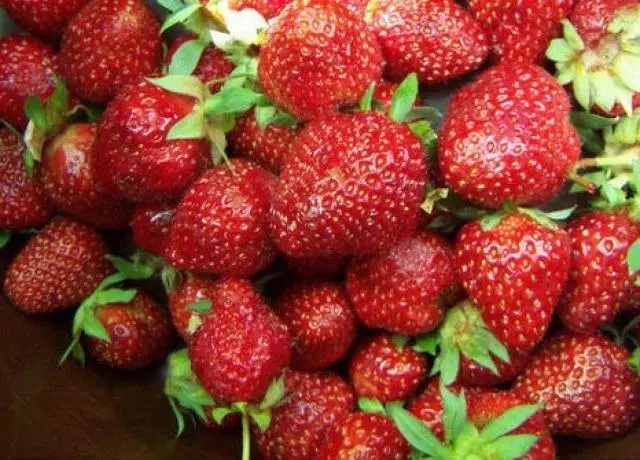
Many varieties of strawberries for Siberia are characterized by early or medium fruiting. Remontant varieties are no less in demand, capable of producing crops from June until the arrival of frost. About 2 weeks pass between each picking of remontant berries.
Most of the strawberry varieties for Siberia were bred by domestic specialists. Plants are adapted to the conditions of this region and give a good harvest.

The following varieties are most popular in Siberia:
- Darenka – an early strawberry that brings large sweet berries with sourness;
- Omskaya early – a variety bred specifically for the regions of Siberia, characterized by small sweetish fruits;
- Amulet – a dessert variety that gives a bountiful harvest;
- Tanyusha is another variety of strawberries adapted to Siberian conditions;
- Elizabeth II – remontant variety, characterized by large fruits and long-term fruiting;
- Temptation – remontant strawberry with a nutmeg flavor.
Soil preparation
Strawberries prefer light sandy or loamy soils rich in organic fertilizers.

To prepare the soil before planting the plants, the following components will be required:
- chernozem – 1 bucket;
- wood ash – 0,5 l;
- fertilizer containing a complex of useful substances – 30 g.
Good fertilizers for strawberries are compost, humus or rotted manure. For 1 sq. m of soil requires up to 20 kg of organic matter. Additionally, you can use superphosphate (30 g) and potassium chloride (15 g).
When growing remontant or large-fruited varieties, the rate of fertilizers is doubled. Substances must be added according to the dosage in order to avoid an overabundance of minerals.
Strawberries do not tolerate soils with high acidity. This figure can be reduced by adding slaked lime (5 kg per hundred square meters).
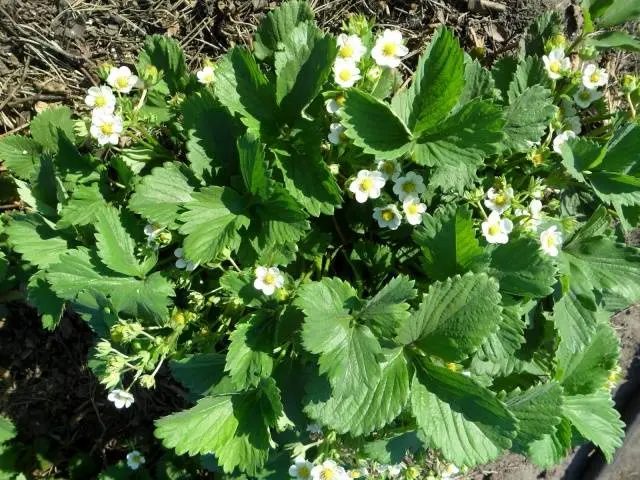
Site Selection
Strawberries require certain conditions that must be provided regardless of the region of its cultivation. Plants require abundant sunlight to bear fruit. Therefore, the beds are arranged in such a way that they are not shaded by trees or buildings.
When choosing a place for planting in open ground, crop rotation rules are taken into account. It is not allowed to plant strawberries where eggplant, potatoes, tomatoes, cucumbers or cabbages previously grew. Good predecessors for strawberries are: garlic, lek, beets, oats, legumes.
When choosing a site, one should take into account that severe frosts are characteristic of Siberia. High snow cover serves as a reliable protection of plants from freezing.
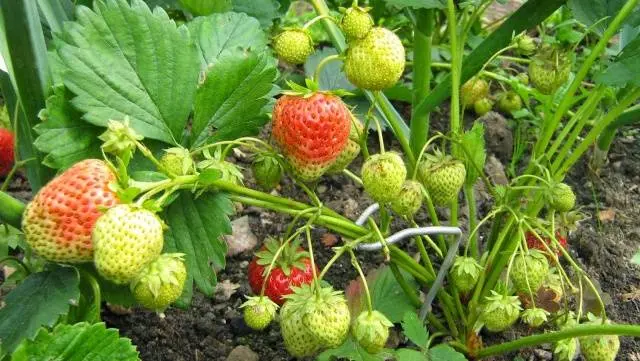
In the spring, the snow begins to melt, due to which numerous full-flowing streams are formed. If the spring stream touches the strawberry garden, it will have a detrimental effect on the plantings. As a result, you will have to equip a new site for the berry.
Rules of landing
Proper planting will help ensure long-term fruiting of strawberries. Leave at least 25 cm between plants. Although seedlings take up little free space in spring, they grow over the summer and form a powerful bush.
Between the rows leave a distance of 0,8 m. This way you can avoid thickening of the plantings and make it easier to care for the plants. Strawberries are grown on one bed for 3-4 years, after which a new plot is equipped for it.
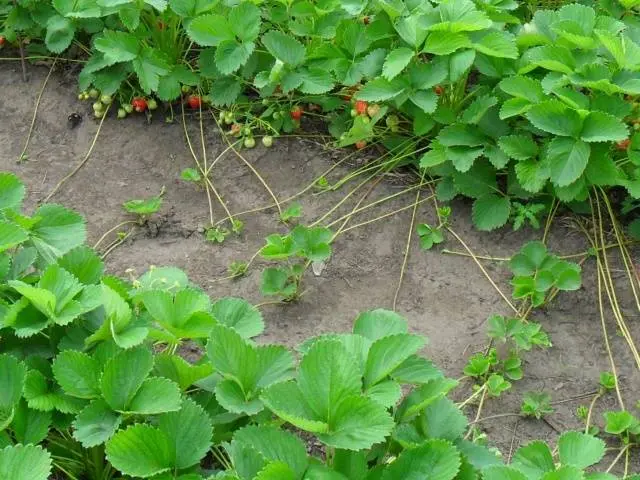
Before planting strawberries, you need to dig holes, then water the ground well and wait until the moisture is absorbed. Fertilizer for plants is applied in the autumn, however, in the spring it is allowed to use humus and ash.
Seedlings are carefully placed in the pits so as not to damage their root system, which is covered with earth. After planting, the soil must be compacted. Then the strawberries are watered and covered with a film for 10 days. This will protect the plants from cold snaps and strengthen their roots.
Feeding of strawberries
The fruiting of strawberries largely depends on the supply of nutrients.
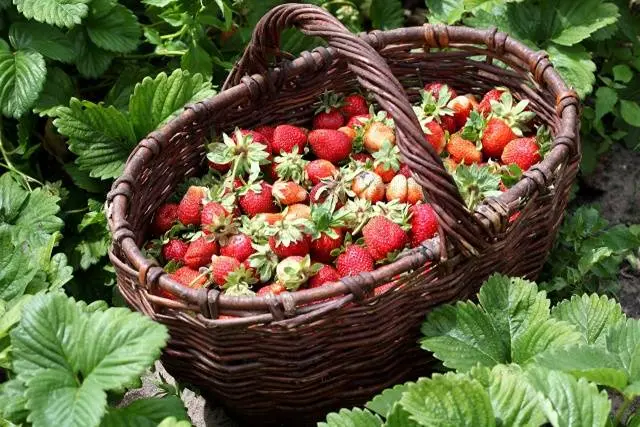
It is necessary to take care of plants in order to saturate them with useful components in several stages:
- spring processing;
- recharge after the appearance of the ovary;
- processing after harvest;
- autumn feeding.
In the spring, strawberries are fertilized with bird droppings (0,2 kg), which are diluted in 10 liters of water. The solution is infused for a day, then the plants are watered under the root.
Nitroammophoska is a complex fertilizer containing nitrogen, phosphorus and potassium. These trace elements are responsible for the development of strawberries.
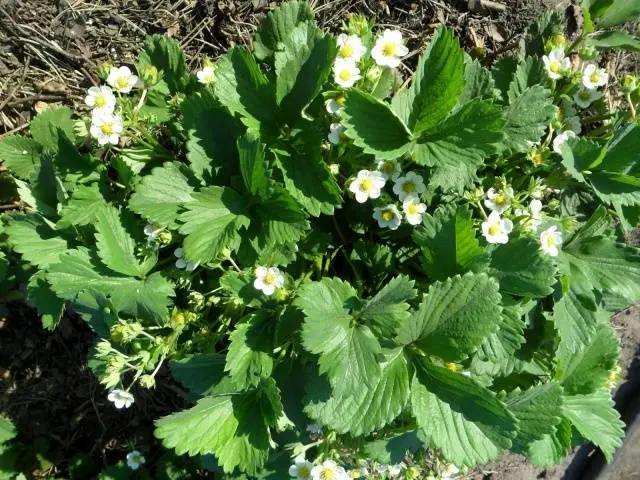
When ovaries appear, you need to water the plants with a solution of mullein. For this, rotted manure is used, which must be infused for several days.
In summer, plants are provided with potassium, which is responsible for the taste of berries. This substance is found in humus and ash. Humus (0,3 kg) is diluted with water (10 l), after which it is left for a day.
Ash is a universal fertilizer for strawberries, containing a whole range of useful substances. It is embedded in the soil between rows with plantings or used as a solution. An additional effect of the ash is the protection of plants from pests.
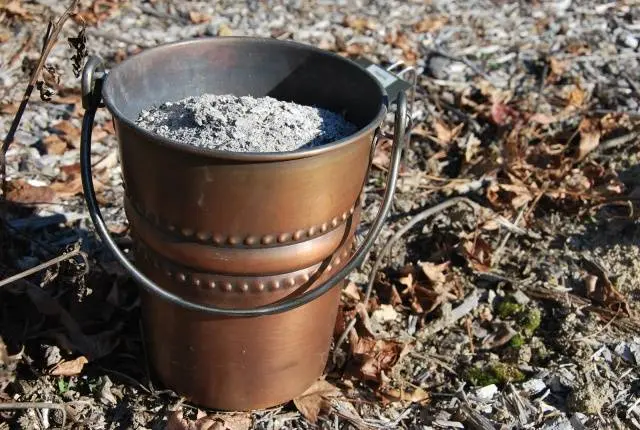
In autumn, the main fertilizer for strawberries is mullein. Superphosphate or potassium sulfate is added to a solution based on it. For 10 liters of water, the norm of mineral fertilizers is no more than 30 g.
Watering strawberries
Strawberries need to be watered regularly to harvest. Additionally, it is required to provide oxygen access to the roots of plants. Therefore, another stage of care is loosening the soil.
The rate of incoming moisture is determined taking into account precipitation. In rainy weather, strawberries are covered with agrofilm during flowering and fruiting. So you can protect plantings from the spread of fungal diseases.
The level of soil moisture for strawberries depends on the type of soil. For sandy soil, the moisture content should be about 70%, for clay soil – about 80%.
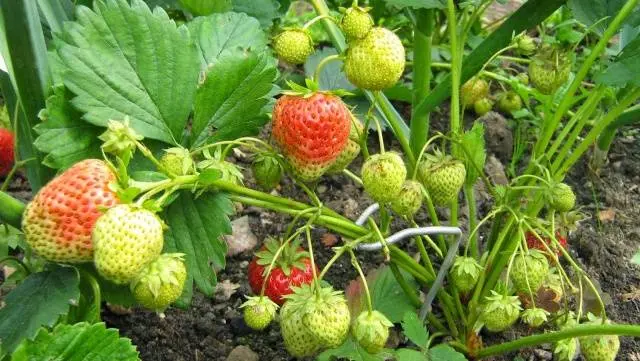
Each plant requires up to 0,5 liters of water. After planting strawberries, watering is done daily for 2 weeks. Then between the procedures make a break of 2-3 days.
On average, strawberries are watered 1-2 times every week. Plants prefer a rare but plentiful supply of moisture. It is better to refuse frequent and poor watering.
Water for watering strawberries should not be too cold. It can be defended in greenhouses or wait until it warms up in the sun. For a large number of plants, it is better to equip drip irrigation, which ensures a uniform supply of moisture.

Mustache trimming
As the strawberry grows, it develops a mustache – long shoots that allow the plant to grow. Due to the mustache, you can get new seedlings. If you do not carry out timely pruning of the shoots, then this will lead to a dense planting and a decrease in productivity.
Extra shoots are recommended to be removed immediately, since strawberries spend a lot of vitality on them. Additionally, dry leaves and stems of plants are removed. Leave only the shoots that are planned to be used for seedlings.
Mustache pruning is done in spring before flowering and in autumn, when the last crop is harvested. For work, a dry day without wind, morning or evening period is selected. Strawberry shoots are cut with scissors or secateurs.
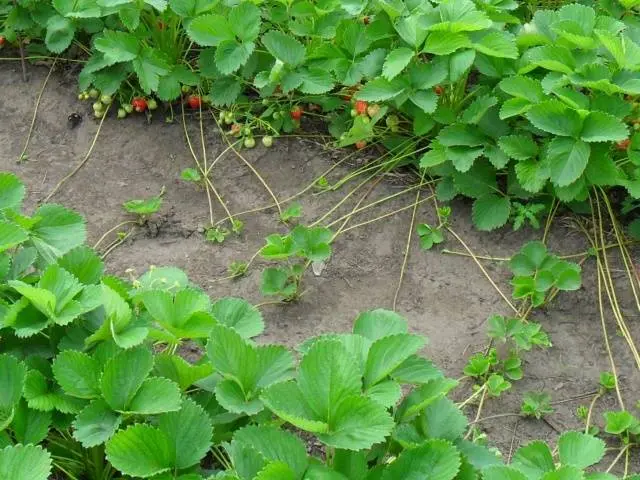
Mulching of soil
Mulching creates a protective layer on the soil surface. Its additional function is to enrich the soil with nutrients.
For mulching plantings with strawberries, you can choose an inorganic material – film, polyethylene or woven material. It is recommended to cover plants in Siberia in the spring to protect them from cold weather.
Organic mulch helps to enrich the soil – straw, hay, sawdust. Such a layer dries quickly after watering, which reduces the spread of rot on plants. Mulch becomes an obstacle to the growth of weeds.

Mulching is done in the spring when the first strawberry ovaries appear. Plant stems often droop under the weight of berries. The protective layer will protect the fruit from contamination.
For mulching in the fall, synthetic materials, straw, needles, and fallen leaves are used. This will keep the plants from freezing until the snow cover appears. In the spring, mulch will accelerate the warming of the soil, which has a positive effect on the rate of ripening of berries.

Conclusion
For the cultivation of strawberries in Siberia, varieties bred for this region are mainly used. Plants must remain cold tolerant, mature in a short time and provide good palatability.
The conditions of Siberia are able to tolerate strong plants that receive regular watering and top dressing. A sunny place is chosen for the berry plant, where there are no blackouts and the likelihood of flooding with melt water. Particular attention is paid to mulching the soil and sheltering plants from frost and spring cold snaps.









